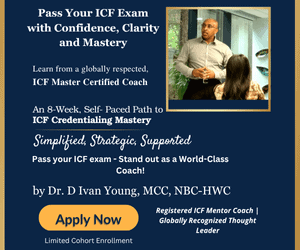I learned how to coach from a virtual school. Initially, I doubted that remote coaching would be as effective as being with someone in person. I quickly learned I was wrong. In fact, I was often better able to tune into my clients virtually than during in-person interactions.
The success of my virtual conversations was not based on my ability to ask good questions. I quickly learned that my effectiveness depended on how fast I could engender feelings of trust and safety. Whether virtual or in person, people have to feel psychologically safe enough to say what is on their minds. They must feel they won’t be judged for what they share. They trust your intention is to be helpful, not to make them believe or act in ways that you or others would approve.
Even online, the relational field between you and the people you are talking to is palpable and powerful. When you foster feelings of trust and safety in others, the need to protect and defend oneself is regulated down, creating optimal conditions for exploration and change. The effectiveness of online conversations depends more on the quality of your presence than the careful words you choose.
These eight tips will help you establish a safe and trusting connection when working remotely:
1) Challenge your assumptions around the ability to connect beyond the screen or phone.
Many of the principles of presence and emotional intelligence apply regardless of the platform for the conversation. To establish a comfortable connection, release any tenseness in your body, breathe in the emotions you want to feel, such as “curious and care,” and remember to respect the person you are with as capable and resourceful.
2) Make sure you have a comfortable, quiet and visually pleasant place to conduct your conversation.
You must be free from distractions, such as ringing phones, email, and events happening outside your windows. If people can see your workspace, make sure the clutter is clear. Your space should reflect your professional image. Make sure you have enough power and bandwidth for undisrupted communications.
3) Develop your self-awareness.
No matter what happens, the energy you project is vital to the success of the interaction. You need to regulate your emotions and energy throughout the conversation to stay present and connected. Don’t get caught up in their stories or confusion. Use non-reactive empathy to remain receptive and caring while maintaining courageous stability.
4) Be curious about their personal state before diving in.
Inquire where the person is right now. Are they ready for the conversation or distracted by projects or life events? Ask if what just happened is still lingering in their thoughts and what they need to do to be present to the conversation. Give them space to talk and time to shift their focus if they choose to move into the moment with you.
5) Use reflective statements so people know they are heard.
The use of reflective statements not only help people sort through their thoughts, but also feel seen, heard and valued when they hear you replay their words. Use summarizing and paraphrasing to reflect the words you hear and the emotional expressions you notice. Start your sentences with, “So you are saying…,” “You got quiet (or loud) when…” or “What seems to be most important to you is…”
6) Ask about their challenges, not their problems.
You will get more traction in a conversation by asking people what challenges they would like to address than what problems they are dealing with. Then ask them what it might look like if the challenge didn’t exist. You can then coach them to see what they can do to diminish or eliminate the challenge.
7) Listen more deeply.
Cultivate your curiosity. Ask about the meaning of the words they choose. Notice and share shifts in tone and expressions to help them discover what hasn’t been said. Help them examine the usefulness of their beliefs about the present situation and assumptions about the future. This will help them choose their next best steps.
8) Be conscious of cultural differences.
Philippe Rosinski says in his book, Coaching Across Cultures, “Culture encompasses both visible (behaviors, language, artifact) and invisible manifestations (norms, values, basic assumptions or beliefs).” Knowing the context people live in will help you connect safely and respectfully.
Disclaimer
The views and opinions expressed in guest posts featured on this blog are those of the author and do not necessarily reflect the opinions and views of the International Coach Federation (ICF). The publication of a guest post on the ICF Blog does not equate to an ICF endorsement or guarantee of the products or services provided by the author.
Additionally, for the purpose of full disclosure and as a disclaimer of liability, this content was possibly generated using the assistance of an AI program. Its contents, either in whole or in part, have been reviewed and revised by a human. Nevertheless, the reader/user is responsible for verifying the information presented and should not rely upon this article or post as providing any specific professional advice or counsel. Its contents are provided “as is,” and ICF makes no representations or warranties as to its accuracy or completeness and to the fullest extent permitted by applicable law specifically disclaims any and all liability for any damages or injuries resulting from use of or reliance thereupon.
Authors
Post Type
Blog
Audience Type
Coach Educators, Experienced Coaches, External Coaches, ICF Chapter Leaders, Internal Coaches, New Coaches, Professional Coaches, Team and Group Coaches
Topic
Coaching Toolbox, Discover - Your Coaching Career
Related Posts
How Conscientious Inclusion Can Improve Your Coaching
Coaching continues to evolve as the world becomes more interconnected, multicultural, and…
The Coaching Trap: When Empathy Becomes Exhaustion
Prepare yourself for the fact that this will not be about you…
Your Guide to Preparing for the ACC Exam
Much like a smartphone upgrade that introduces improvements for a smoother user…








